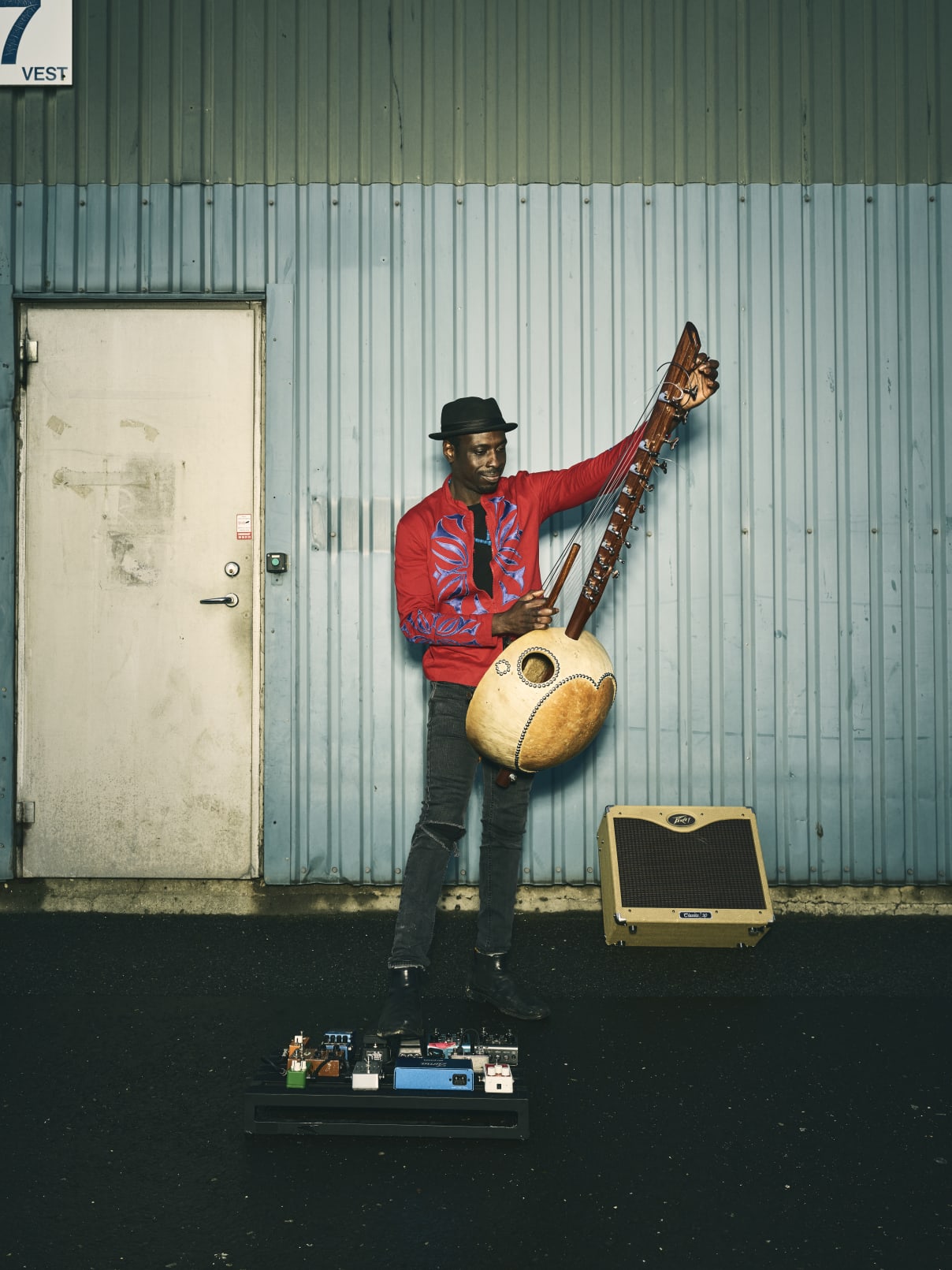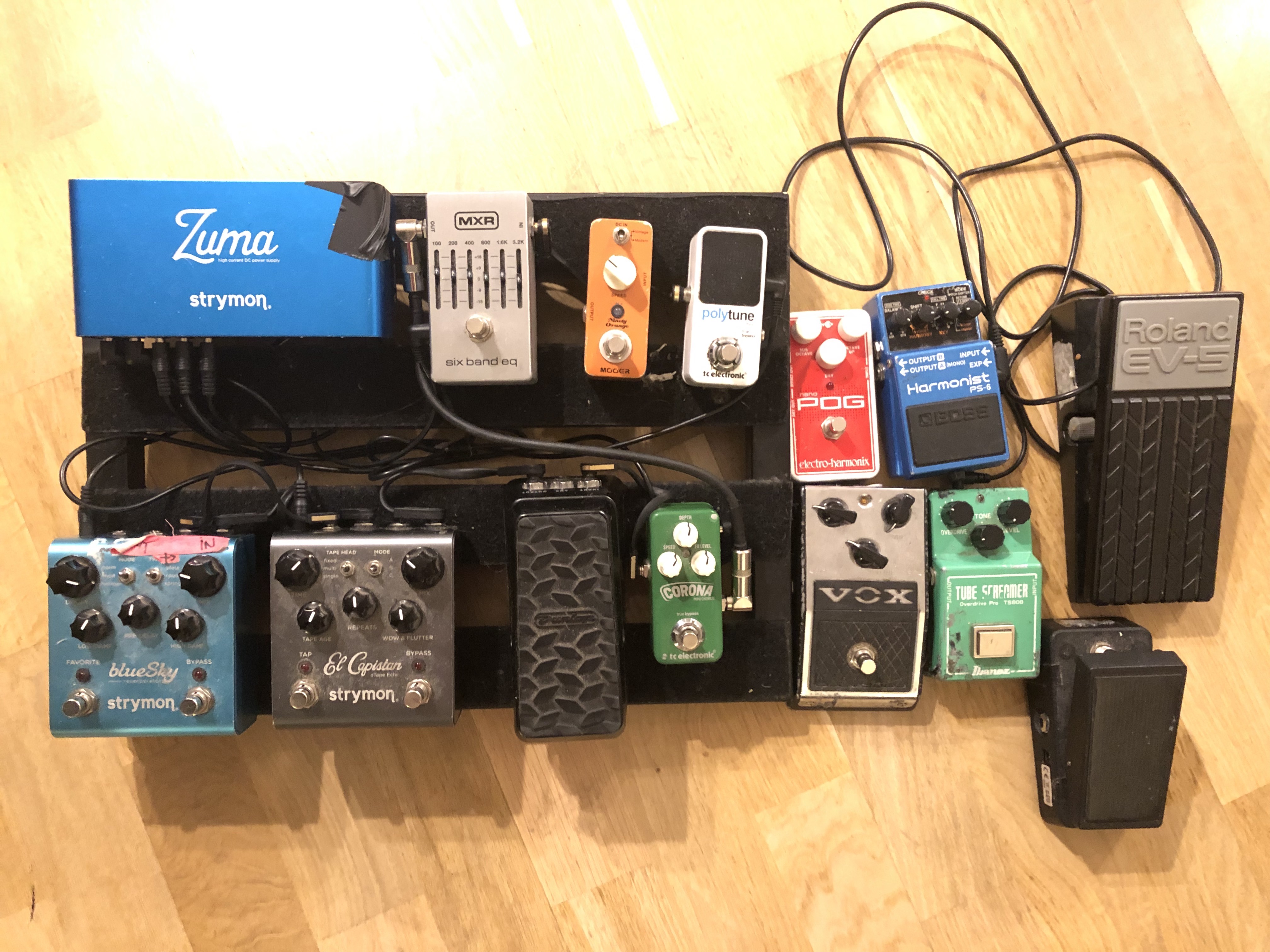Playing the kora is in Dawda Jobarteh's blood. His grandfather, Alhaji Bai Konte, was a legendary kora player in The Gambia, West Africa, and in Dawda's family almost all the men played the instrument. Dawda was born there in 1976, and at first he rebelled against the tradition by taking up drums. But in his early 20s, after moving to Denmark, he finally accepted his heritage. He's been playing the kora ever since—with fusion bands, with string quartets, with avant-rock ensembles, and as a solo artist he's released three albums (plus a new one imminently) with Sterns Africa.

"It doesn't matter how often I play around," he tells me as we chat at Daw's Kitchen in Copenhagen, "and how many places I play, but there's almost always someone who comes up and says, 'What is that instrument? I've never seen that!' You can see jaws dropping in reaction to the look and the sound of the kora. It's a special instrument that you don't see that often, very unfamiliar to many people." Let's see if we can help.
A kora is often described as a harp-lute, he explains. The body is made from a hollowed-out half of a calabash gourd, essentially a large vegetable shell, which is covered in animal skin, traditionally from a cow, but deer and goat skins are also used. It has a tall wooden neck that goes through the body and out to the base, and two shorter wooden handles either side. From the neck to the tailpiece and over the large, flat bridge run two sets of strings, traditionally 21 in total, though some modern kora players, Dawda included, opt for 22.
"You play the kora with the thumb and pointing finger of each hand," Dawda continues, "using the other three fingers to hold the handles. And yes, you can actually do quite a lot with those four fingers! Usually I stand with the kora when I perform with a band, but traditionally you would sit down to play it."
The idea of tradition pops up a lot when talking about the kora. "Traditionally," Dawda says, "the kora was played at celebrations like weddings and naming ceremonies, for praise singing, and for accompanying epics of Manding history. It is still used in that way, but nowadays it's also used in popular music, in Africa and elsewhere, and often amplified."
The kora's roots are in West Africa, notably Dawda's native land, The Gambia, but also in Mali, Senegal, Guinea-Conakry, Guinea-Bissau, and Burkina Faso. "In the ancient Manding time, it was one big area with the same culture. Then, in colonial time, the borders were created, and we talk about those countries today. We are very privileged when it comes to traditional West African music and the old traditional instruments such as the kora, ngoni, riti, and balafon."
In Africa, tuning the kora's strings was traditionally a matter of adjusting their pitch to the range of a narrator or singer. Koras now are usually tuned to F, with adjustments made to play in different keys—although, in theory at least, players can tune the instrument however they like.

"For the F major tuning," Dawda explains, "the first of the strings, the thickest, on my left will be F, the next is C—so it's funny, it's not going as you might expect—then to a D, then E, F, G, A, B-flat, and so on across the strings, giving you about three-and-a-half octaves. Now, if you want to go to C major, say, you just tune the B-flat up to a normal B. And let's say you want to go to G major from there, then you would just tune the F to F-sharp."
He says this all depends, of course, on what exactly he's playing and the context—whether it's solo or in a band of some kind. "Tuning also can depend on the kora itself," he adds. "It's made with natural materials—a calabash and a skin—so moisture in the atmosphere can interfere with the tuning. That can sometimes be an issue, though luckily it does not happen very much. And if your strings are too old, they can be difficult to keep in tune." Strings for a kora today are usually cut from nylon fishing line in various gauges.
Finding a kora to play can be a problem, depending on where you live. For Dawda in Denmark, there was nothing locally, and he had to venture to France and to the UK. He says that some factors involved in choosing a kora are technical, while others are more to do with personal preferences.
"The first thing to look for is a good calabash," he explains. "I like it if they are not too big, and I look for the thickness of it—the 'shell' should not be too thick. Next thing is the neck. Traditionally, the strings are attached with bands or belts of cow skin, but this makes it difficult to stay in tune. Now, all my koras have necks with machine heads. The size of the bridge and the distance between the strings is important. Your fingers get used to a certain distance, and then it becomes difficult to play with a different bridge. So I have all my bridges custom made to fit my fingers and my way of playing."
Currently, Dawda plays three koras made by Les Shepard at Adaptatrap in Brighton, England. "But the biggest challenge for a kora player today is amplification," he says. "Amplification can make you feel awesome after a concert or it can make you feel terrible!"
A kora's body has a soundhole in it, toward the top of the right-hand side as viewed by the player. In Dawda's experience, the bigger this hole, the more likely an amplified kora will feed back. And the soundhole is certainly not the place to locate any pickups.
He uses Wilson pickups, designed originally for the double bass by Ole Wilson in Aabyhøj, Denmark. "They sound fantastic, and I currently have six pickups on each kora, three on each side of the bridge. They press into small holes drilled into the bridge."
In the studio, Dawda tends to use a mix of pickups and mics. "Recently, I've recorded with a stereo out from one of my pedals, which gives a better sound. There is more attack from the pickups line, and a more ambient and natural sound from the mics, giving the room and the real sound of the kora. So I blend these together, which is what I've done for my last three albums, and I'm really happy with the result."
That mention of a pedal leads to Dawda's growing love for effects. "I originally tried some on my first album, Northern Light Gambian Night [Sterns Africa, 2011]. I was working with the guitarist Mikkel Nordsø—he loves Jimi Hendrix and Santana and has been collecting pedals for many years."

Dawda had dabbled with some pedals before that session but had feedback problems. "It's much easier to make terrible, out-of-control sounds," he says, laughing, "you know? Many of my colleagues have hated me for that! It was a learning process. Anyway, on one song I tried playing my kora through Mikkel's pedals and I started freaking out, just for fun. But afterward, we said well, this has to be on the album—and it's there, a tune called 'Dinding Do.'"
A more recent example is the Mongo Santamaria composition "Afro Blue" on I Met Her By The River (Sterns Africa, 2018). "I used my Cry Baby wah-wah and a Vox and Ibanez distortion," he says. "Also, I have this Boss harmonizer that I bought for no money, and at some point I found a Roland EV expression pedal and realized that was a nice combination. Then I have a BlueSky reverb—when you hear that sound, you know it's the Strymon—and also the Strymon delay. So my work on that tune was a combination of all these things."
His next album, Soaring Wild Lands, is coming out on Sterns Africa in January 2022, and the single "Sunset In Batumi" has a video featuring Dawda alongside a string quartet and percussion. Wild Lands is one of three albums that he wrote and recorded during lockdown.
"The kora is delicate and gentle," he concludes, "a beautiful instrument that's very nice for the ears, you know? But then if I want to take it to a different dimension, the pedals provide a good way to express some feeling and intensity, some energy. Kora music has been in my ears for many, many years, and for me, doing my music is like creating art."
Keep up to date with Dawda Jobarteh at his website here.
About the author: Tony Bacon writes about musical instruments, musicians, and music. His books include The Ultimate Guitar Book (happy 30th birthday UGB!) and Electric Guitars: Design & Invention. Tony lives in Bristol, England. More info at tonybacon.co.uk.
